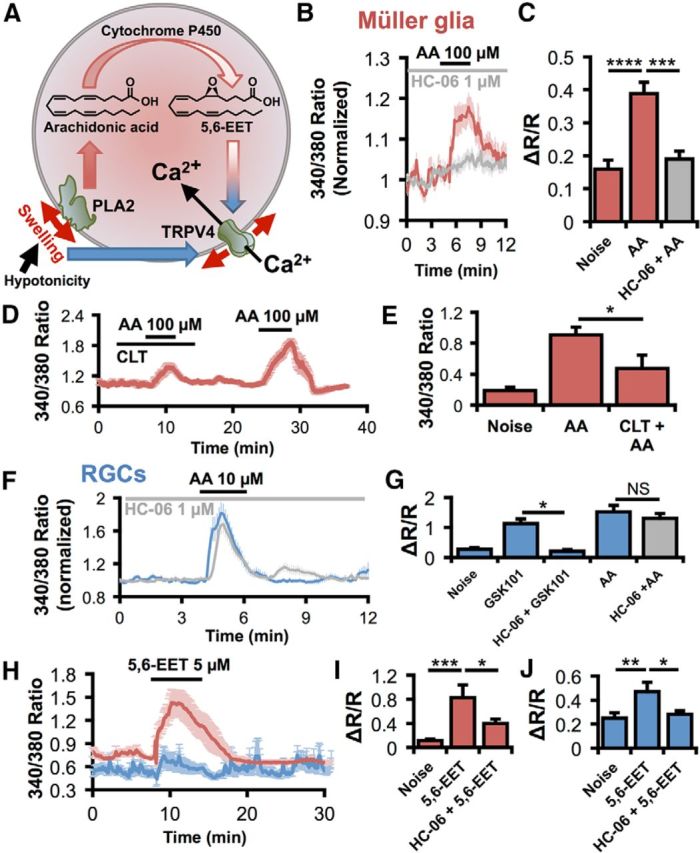Figure 8.

TRPV4 gating in Müller cells, but not RGCs, requires activation of PLA2. A, Working model for TRPV4 activation by cell swelling. In hypotonicity, both RGCs and Müller glia swell. This stretches the membrane and activates PLA2 at least in Müller cells. PLA2 synthesizes AA, which is metabolized by CYP450 into 5,6-EET, an endogenous agonist for TRPV4. 5,6-EET can activate TRPV4 in both cell types, but its potency is significantly more pronounced in Müller glia. Although required in Müller cells, this indirect force transduction pathway does not contribute to swelling responses in RGCs. Thus, RGCs either use a novel force transduction pathway (solid blue arrow) or direct gating of TRPV4 by membrane stretch (red arrows). B, C, AA elevates [Ca2+]MC by activating TRPV4. n = 34, 19, and 15, respectively. D, E, The CYP450 antagonist clotrimazole suppresses AA-induced [Ca2+]MC elevations. F, G, Although HC-06 (n = 16) completely inhibits TRPV4 activation by GSK101 (n = 10) in RGCs, the TRPV4 antagonist has no effect on AA responses (n = 46). H, Average traces from a representative experiment show that the 5,6-EET response is larger in Müller cells (red) than RGCs (blue). I, J, 5,6-EET activates TRPV4 in both Müller glia (I; n = 14) and RGCs (J; n = 54). NS, Not significant (p > 0.05). *p < 0.05. **p < 0.01. ***p < 0.001. ****p < 0.0001.
